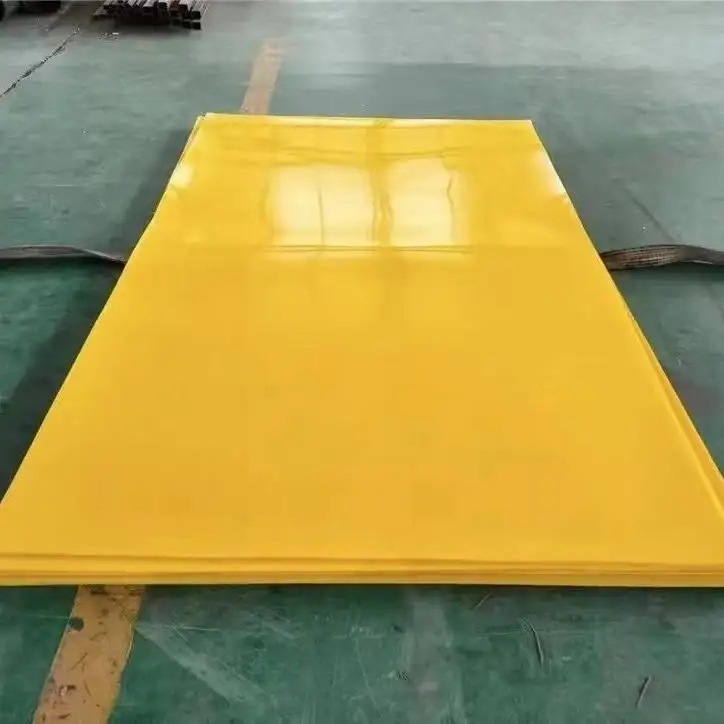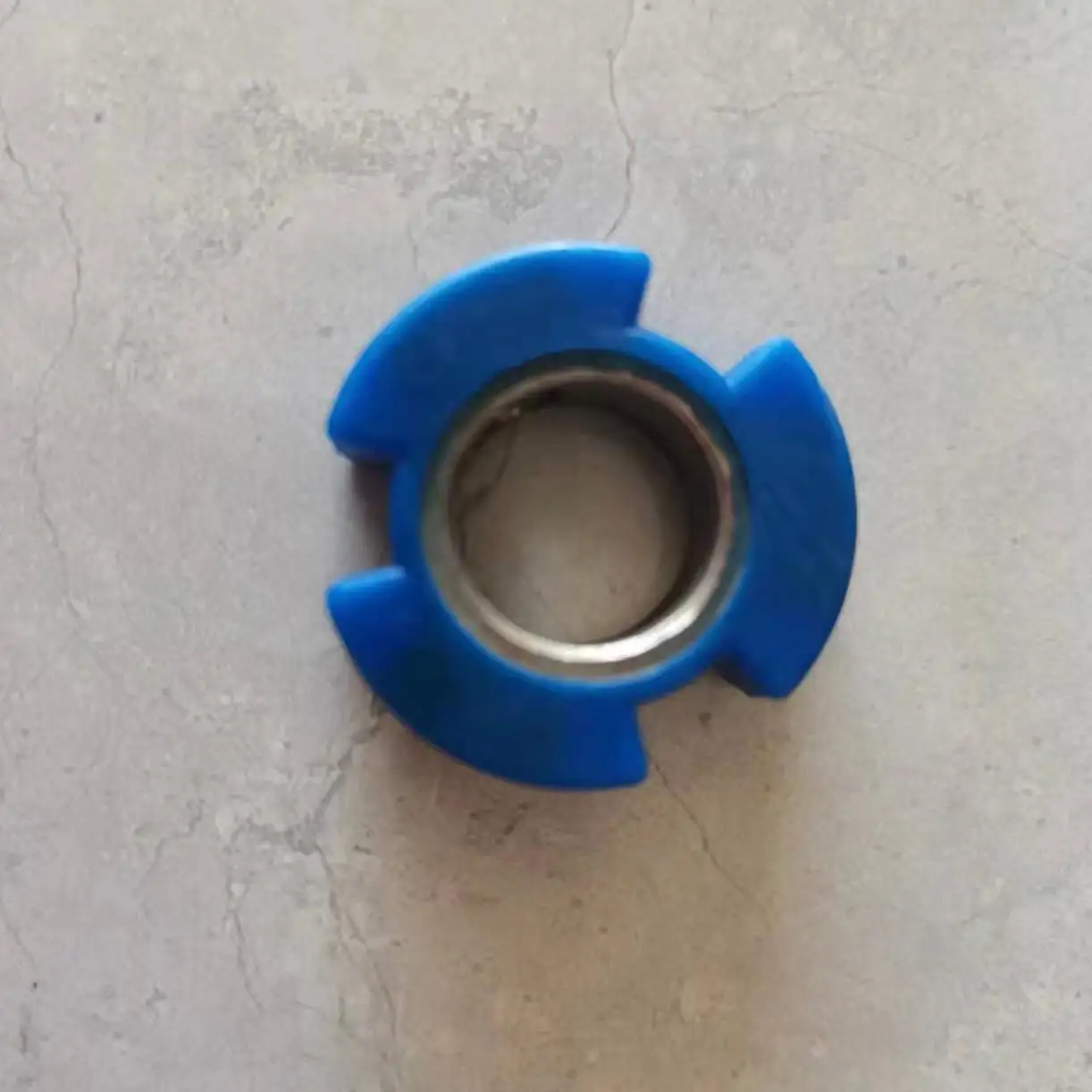এফআরপি পৃষ্ঠের গুণগত মানের উপর মুক্তি এজেন্টগুলির প্রভাব বোঝা
ফাইবার সংবলিত পলিমার ( FRP ) কম্পোজিটের পৃষ্ঠের গুণগত মান সৌন্দর্য এবং কার্যকারিতার ক্ষেত্রে গুরুত্বপূর্ণ ভূমিকা পালন করে। এফআরপি রিলিজ এজেন্টস উত্পাদন প্রক্রিয়ায় মৌলিক উপাদান হিসাবে কাজ করে, যা সরাসরি কম্পোজিট অংশগুলির চূড়ান্ত পৃষ্ঠের বৈশিষ্ট্যগুলির উপর প্রভাব ফেলে। এই বিশেষ রাসায়নিকগুলি ছাঁচ এবং কম্পোজিট উপকরণের মধ্যে একটি বাধা তৈরি করে, যা পার্টগুলি পরিষ্কারভাবে খুলতে সাহায্য করে এবং সমাপ্ত পণ্যের পৃষ্ঠের মসৃণতা এবং চকচকে মাত্রার উপর উল্লেখযোগ্য প্রভাব ফেলে।
আধুনিক কোম্পোজিট উত্পাদনে চমৎকার পৃষ্ঠতলের সমাপ্তির প্রয়োজন, বিশেষ করে গাড়ি, বিমান ও ভোক্তা পণ্য শিল্পে যেখানে চেহারা সবচেয়ে বেশি গুরুত্বপূর্ণ। এফআরপি রিলিজ এজেন্ট এবং পৃষ্ঠের মানের মধ্যে সম্পর্ক জটিল, যা এমন একাধিক পরিবর্তনশীল নিয়ে গঠিত যা প্রস্তুতকারকদের অবশ্যই বিবেচনা করতে হবে যাতে চূড়ান্ত ফলাফল অর্জন করা যায়।

রিলিজ এজেন্ট প্রযুক্তির পিছনে বিজ্ঞান
রাসায়নিক গঠন এবং পৃষ্ঠের মধ্যে সংঘাত
এফআরপি রিলিজ এজেন্ট বিভিন্ন রাসায়নিক সংকরণে আসে, যার প্রতিটি মোল্ডের পৃষ্ঠ এবং রেজিন সিস্টেমের সাথে আলাদাভাবে প্রতিক্রিয়া করার জন্য ডিজাইন করা হয়। সেমি-পার্মানেন্ট রিলিজ এজেন্টগুলি সাধারণত প্রতিক্রিয়াশীল সিলিকন বা ফ্লুরোপলিমারগুলি ধারণ করে যা মোল্ডের পৃষ্ঠের সাথে বন্ধন তৈরি করে, একটি অত্যন্ত পাতলা, স্থায়ী রিলিজ ফিল্ম তৈরি করে। এই ক্ষুদ্র স্তরটি রেজিন কীভাবে মোল্ডের পৃষ্ঠের বিরুদ্ধে প্রবাহিত হয় এবং কিউর হয় তার উপর প্রভাব ফেলে, যা চূড়ান্ত পৃষ্ঠের মানকে সরাসরি প্রভাবিত করে।
মুক্তি এজেন্টদের আণবিক গঠন ছাঁচের পৃষ্ঠের ক্ষুদ্র ক্ষুদ্র ছিদ্র এবং অনিয়মিততা পূরণ করার ক্ষমতা নির্ধারণ করে। উচ্চ-কার্যকারিতা সম্পন্ন মুক্তি এজেন্ট অত্যন্ত মসৃণ ইন্টারফেস তৈরি করে যা ছাঁচায়নকৃত অংশের উপর শ্রেষ্ঠ পৃষ্ঠের সমাপ্তি ঘটায়। মুক্তি এজেন্ট এবং রজন সিস্টেমের মধ্যে রাসায়নিক সামঞ্জস্যতা অত্যন্ত গুরুত্বপূর্ণ, কারণ অসামঞ্জস্যতার কারণে পৃষ্ঠের ত্রুটি এবং কম চকচকে মাত্রা দেখা দিতে পারে।
পৃষ্ঠটান এবং ভেজার বৈশিষ্ট্য
মুক্তি এজেন্টগুলি ছাঁচ এবং কম্পোজিট উপকরণের মধ্যে পৃষ্ঠটান পরিবর্তন করে। পৃষ্ঠটানের সঠিক ভারসাম্য আদর্শ ভেজার এবং মুক্তি বৈশিষ্ট্যের জন্য অপরিহার্য। খুব বেশি পৃষ্ঠটান রজন প্রবাহ এবং পৃষ্ঠের ত্রুটিতে খারাপ ফল দিতে পারে, যেখানে খুব কম পৃষ্ঠটান মাছের চোখ বা ক্রলিং সমস্যার কারণ হতে পারে যা পৃষ্ঠের মসৃণতা ক্ষতিগ্রস্ত করে।
FRP মুক্তি এজেন্টগুলি এমনভাবে তৈরি করা হয়েছে যাতে ছাঁচ তৈরির প্রক্রিয়া জুড়ে পৃষ্ঠের টান ধ্রুবক থাকে, যেমন তাপমাত্রা এবং চাপের পরিবর্তনের মধ্যেও। এই স্থিতিশীলতা অংশটির সম্পূর্ণ পৃষ্ঠে একঘেয়ে মান নিশ্চিত করে, মসৃণতা বা চকচকে এর স্থানীয় পার্থক্যগুলি প্রতিরোধ করে।
প্রয়োগ পদ্ধতি এবং পৃষ্ঠের মান
অনুকূল প্রয়োগ পদ্ধতি
FRP মুক্তি এজেন্ট প্রয়োগের পদ্ধতি পৃষ্ঠের মানের ফলাফলকে উল্লেখযোগ্যভাবে প্রভাবিত করে। স্প্রে প্রয়োগ বৃহদাকার বা জটিল ছাঁচের পৃষ্ঠের জন্য দুর্দান্ত আবরণ এবং একঘেয়েমি প্রদান করে। স্প্রে প্যাটার্ন, দূরত্ব এবং ওভারল্যাপ নিয়ন্ত্রণ করা আবশ্যিক যাতে পৃষ্ঠের ত্রুটির কারণ হতে পারে এমন অতিরিক্ত স্প্রে বা অপর্যাপ্ত আবরণ প্রতিরোধ করা যায়।
ওয়াইপ-অন অ্যাপ্লিকেশনের জন্য সমানভাবে বিতরণ নিশ্চিত করতে নির্দিষ্ট পদ্ধতির প্রয়োজন। কোটের মধ্যে উপযুক্ত কিউর সময় সহ ক্রস-প্যাটার্ন অ্যাপ্লিকেশন একটি সমতল রিলিজ ফিল্ম তৈরি করতে সাহায্য করে। কয়েকটি পাতলা কোটের তুলনায় কম মোটা কোটের সাধারণত ভালো ফলাফল দেয়, এমন কোটের সংখ্যা এবং কিউরিং শর্তাবলী চূড়ান্ত পৃষ্ঠের বৈশিষ্ট্যকে সরাসরি প্রভাবিত করে।
পরিবেশগত কারক এবং অ্যাপ্লিকেশন নিয়ন্ত্রণ
অ্যাপ্লিকেশন পরিবেশে তাপমাত্রা, আর্দ্রতা এবং বায়ুর গুণমান রিলিজ এজেন্টগুলি কীভাবে কাজ করে তা তীব্রভাবে প্রভাবিত করতে পারে। নিয়ন্ত্রিত অবস্থা ফিল্ম গঠন এবং কিউরিংয়ের ঠিকমতো হওয়া নিশ্চিত করে, যা পরিণত হয় স্থিতিশীল পৃষ্ঠের গুণমানে। ধুলো এবং দূষণ সাবধানে পরিচালনা করা আবশ্যিক, কারণ এগুলি পৃষ্ঠের ত্রুটি সৃষ্টি করতে পারে যা মসৃণতা এবং চকচকে দেখানোকে বাধাগ্রস্ত করে।
আধুনিক অ্যাপ্লিকেশন সিস্টেমগুলি প্রায়শই পরিবেশ নিগরানি এবং নিয়ন্ত্রণ বৈশিষ্ট্য অন্তর্ভুক্ত করে থাকে যাতে মোচন এজেন্ট প্রয়োগের প্রক্রিয়ার সমস্ত পর্যায়ে আদর্শ অবস্থা বজায় রাখা যায়। উৎপাদন পরিবেশে পুনরাবৃত্তিযোগ্য, উচ্চমানের পৃষ্ঠতল সম্পন্ন ফিনিশ অর্জনের জন্য এই ধরনের নিয়ন্ত্রণ অপরিহার্য।
পৃষ্ঠতলের সৌন্দর্য এবং কার্যকারিতার ওপর প্রভাব
উজ্জ্বলতা নিয়ন্ত্রণ
FRP মোচন এজেন্টগুলি চূড়ান্ত অংশে নির্দিষ্ট উজ্জ্বলতা পাওয়ার জন্য প্রস্তুত করা যেতে পারে। উচ্চ উজ্জ্বলতা সম্পন্ন ফিনিশের জন্য এমন মোচন এজেন্টের প্রয়োজন যা খুব মসৃণ পৃষ্ঠে স্থায়ী হয়ে থাকে এবং ঢালাই চক্রের সমস্ত পর্যায়ে তাদের অখণ্ডতা বজায় রাখে। মোচন এজেন্ট রসায়ন এবং রজন সিস্টেমের মধ্যে সম্পর্ক স্থায়ীকরণের সময় পৃষ্ঠের উজ্জ্বলতা বিকাশের ওপর প্রভাব ফেলে।
কিছু মোচন এজেন্টে এমন যৌগ থাকে যা উজ্জ্বলতা বিকাশকে বাড়িয়ে তোলে অথবা নির্দিষ্ট পৃষ্ঠ প্রভাব প্রদান করে। এই ধরনের বিশেষ সূত্রগুলি প্রস্তুতকারকদের বিভিন্ন অংশের জ্যামিতি এবং প্রক্রিয়াকরণ শর্তের মধ্যে দিয়ে স্থিতিশীল উজ্জ্বলতা পাওয়ার অনুমতি দেয়।
পৃষ্ঠের ত্রুটি প্রতিরোধ
মানসম্পন্ন রিলিজ এজেন্টগুলি সাধারণ পৃষ্ঠের ত্রুটি যেমন পিনহোল, কমলার খোসা এবং মাইক্রো-পোরোসিটি প্রতিরোধ করতে সাহায্য করে। রিলিজ ফিল্মটি বায়ু আটকে যাওয়ার বিরুদ্ধে একটি বাধা হিসেবে কাজ করে এবং নিরাময়ের সময় উদ্বায়ী উপাদানগুলি পরিচালনা করতে সাহায্য করে। পৃষ্ঠের ত্রুটিগুলি কমানোর জন্য রিলিজ এজেন্ট এবং নির্দিষ্ট রজন সিস্টেমের মধ্যে মিথস্ক্রিয়া বোঝা অত্যন্ত গুরুত্বপূর্ণ।
অ্যাডভান্সড প্রতিহিংসা এজেন্ট প্রযুক্তিগুলিতে এমন বৈশিষ্ট্য রয়েছে যা সক্রিয়ভাবে ত্রুটি গঠন প্রতিরোধ করে, যেমন উন্নত বায়ু মুক্তির বৈশিষ্ট্য বা উন্নত প্রবাহ বৈশিষ্ট্য। এই ক্ষমতাগুলি বিশেষভাবে গুরুত্বপূর্ণ অ্যাপ্লিকেশনগুলিতে মূল্যবান যেখানে পৃষ্ঠ মানের প্রয়োজনীয়তা কঠোর।
প্রায়শই জিজ্ঞাসিত প্রশ্নাবলী
অপটিমাল পৃষ্ঠ ফিনিশের জন্য কত পর্যন্ত প্রতিহিংসা এজেন্টগুলি পুনরায় প্রয়োগ করা উচিত?
পুনরায় প্রয়োগের ঘনত্ব একাধিক কারকের উপর নির্ভর করে, যার মধ্যে রিলিজ এজেন্টের ধরন, মোল্ডিং শর্তাবলী এবং অংশের জটিলতা অন্তর্ভুক্ত রয়েছে। সেমি-পার্মানেন্ট রিলিজ এজেন্টগুলি সাধারণত একাধিক পুলের জন্য স্থায়ী হয়, যেখানে ঐতিহ্যবাহী মোম প্রতি সাইকেলে প্রয়োগের প্রয়োজন হতে পারে। আপনার নির্দিষ্ট প্রক্রিয়ার জন্য অপটিমাল পুনরায় প্রয়োগের সময়কাল নির্ধারণের জন্য পৃষ্ঠের গুণমান এবং রিলিজ কর্মক্ষমতা পর্যবেক্ষণ করুন।
কি FRP পৃষ্ঠের পোস্ট-প্রসেসিং বা পেইন্ট করার ক্ষমতাকে রিলিজ এজেন্টগুলি প্রভাবিত করতে পারে?
হ্যাঁ, রিলিজ এজেন্টগুলি মাধ্যমিক অপারেশনগুলিকে প্রভাবিত করতে পারে। উচ্চ-মানের রিলিজ এজেন্টগুলি অংশের পৃষ্ঠে ন্যূনতম অবশিষ্টাংশ স্থানান্তর করার জন্য ডিজাইন করা হয়, যা ভালো পেইন্ট আঠালোতা এবং পোস্ট-প্রসেসিংয়ে সাহায্য করে। সর্বদা পরিকল্পিত মাধ্যমিক অপারেশনের সাথে সামঞ্জস্য যাচাই করুন এবং প্রয়োজনে পেইন্টযোগ্য পৃষ্ঠের জন্য বিশেষভাবে তৈরি রিলিজ এজেন্টগুলি ব্যবহার করা বিবেচনা করুন।
রিলিজ এজেন্টের কার্যকারিতাতে মোল্ড পৃষ্ঠের অবস্থার ভূমিকা কী?
ছাঁচের পৃষ্ঠতলের অবস্থা মোচন এজেন্টের কার্যকারিতা এবং চূড়ান্ত অংশের গুণগত মানের ক্ষেত্রে খুবই গুরুত্বপূর্ণ। ভালো প্রস্তুতকৃত পৃষ্ঠতলসহ ভালো অবস্থায় থাকা ছাঁচগুলি মোচন এজেন্টগুলিকে সম প্রলেপ গঠনের সুযোগ করে দেয় যা শ্রেষ্ঠ পৃষ্ঠতলের সমাপ্তি ঘটায়। মোচন এজেন্টের কার্যকারিতা এবং পৃষ্ঠতলের গুণগত মান নিশ্চিত করতে নিয়মিত ছাঁচের রক্ষণাবেক্ষণ এবং সঠিক পরিষ্করণ পদ্ধতি অত্যন্ত প্রয়োজনীয়।

